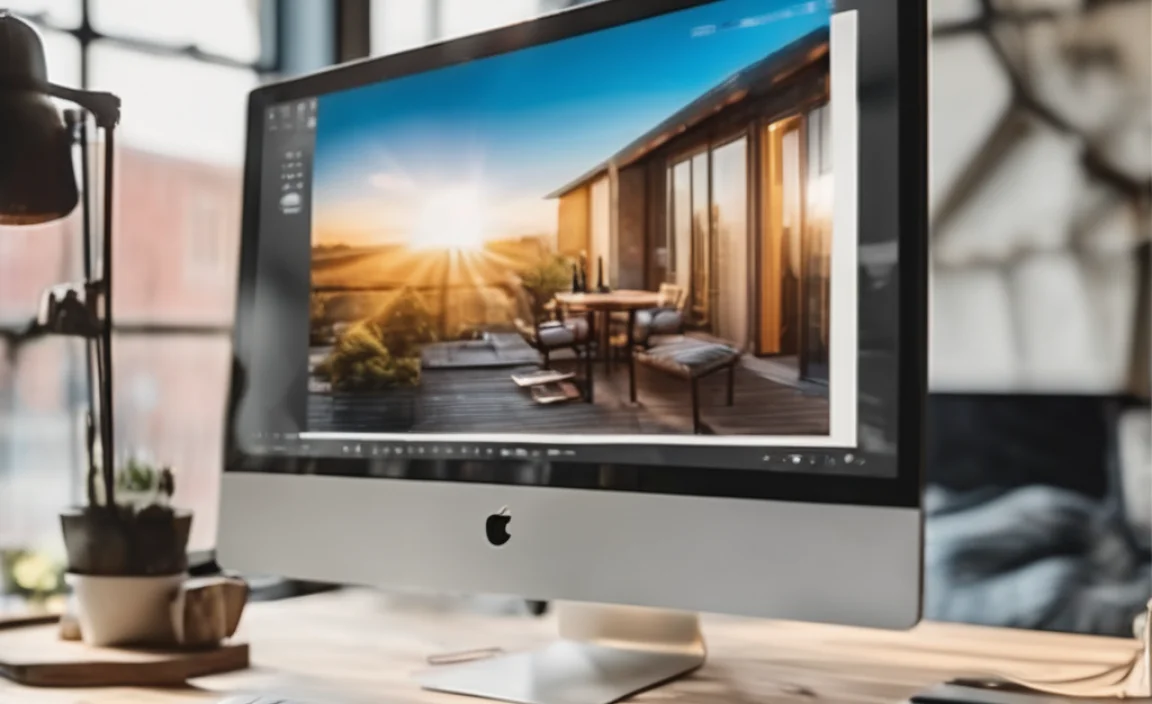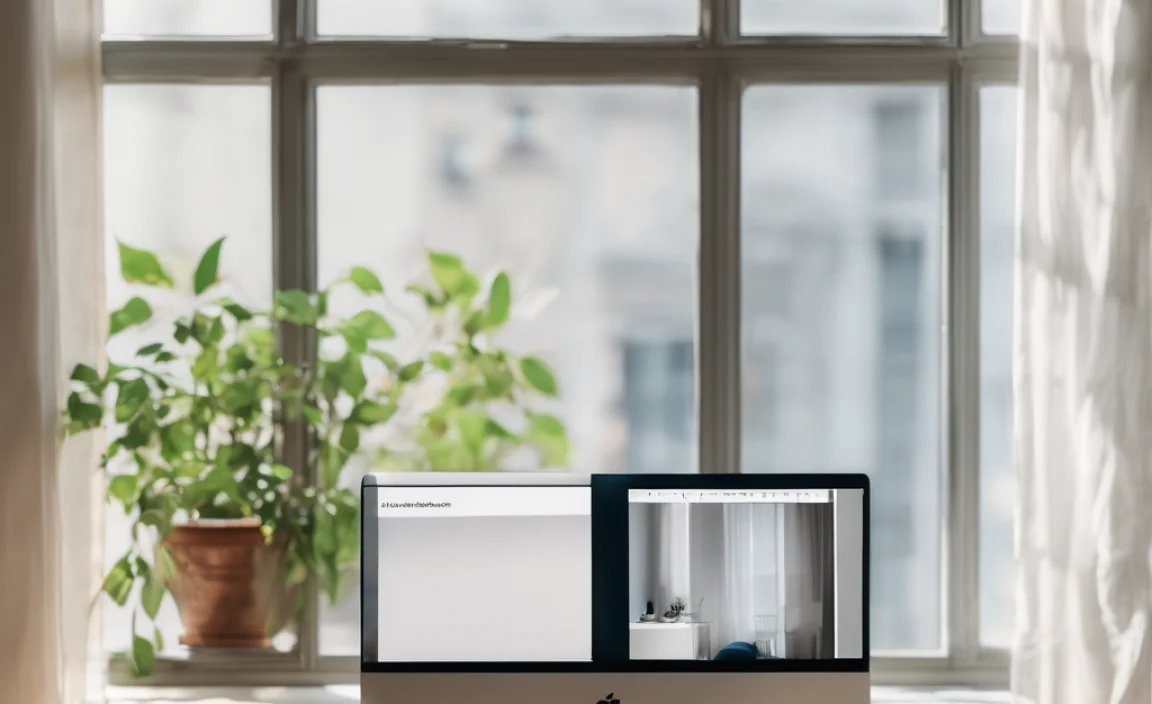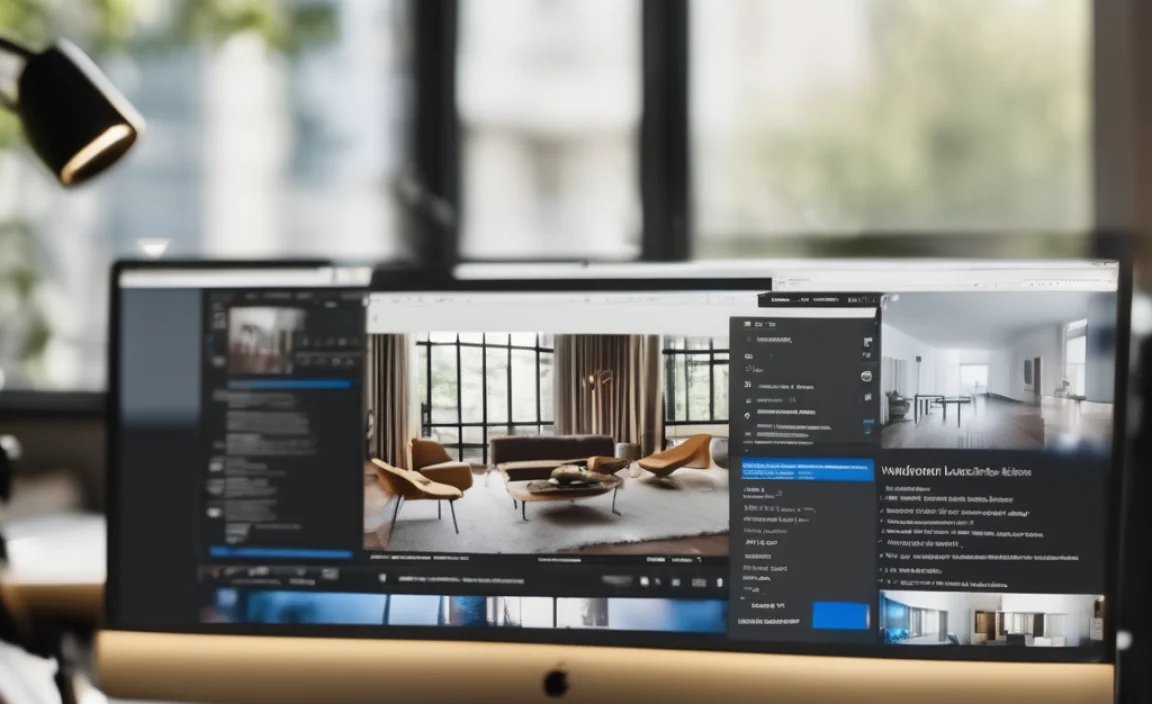You can’t directly download the old Windows Photo Viewer for Windows 10 or 11. However, you can bring back its familiar look and feel with a simple, safe registry tweak. This guide shows you how to get this classic viewer working again for effortless photo browsing.
Hey there folks, Mike Bentley here! Are you one of the many Windows users who miss the good old Windows Photo Viewer? You know, the one that popped open photos lightning-fast and was super easy to use. If you’ve recently upgraded to Windows 10 or Windows 11, you might have noticed it’s gone, replaced by the Photos app, which, let’s be honest, can sometimes feel a bit complex or just not what you’re used to. It’s a common frustration for many, and finding a simple way to get that beloved viewer back can feel like a challenge. Don’t worry, though! In this guide, I’m going to walk you through a safe and reliable method to get Windows Photo Viewer back on your system, so you can enjoy effortless photo viewing again. We’ll cover everything you need to know, step-by-step.
Why People Miss Windows Photo Viewer

It’s not just you! Thousands of Windows users fondly remember the classic Windows Photo Viewer. For years, it was the default way to open images on Windows PCs. Its strength lay in its simplicity and speed. When you double-clicked an image, it just opened, quickly and efficiently, allowing you to easily navigate through your pictures with arrow keys or simple button clicks. There were no complicated menus, no cloud syncing prompts, just your photos, presented cleanly.
The newer Photos app in Windows 10 and Windows 11 is powerful, yes, but it comes with a lot of extra features that some users find overwhelming. Features like video editing, cloud integration, and advanced organization might be great for some, but for others, they just get in the way of simply viewing a picture. This is why so many people search for a “free download Windows Photo Viewer for Windows 10” or Windows 11, hoping to reclaim that straightforward experience.
The Truth About “Downloading” Windows Photo Viewer

Before we dive into the “how-to,” let’s clear something up: you can’t technically download Windows Photo Viewer as a standalone program anymore, especially not from official Microsoft sources for current Windows versions. It was phased out and replaced. However, the program’s files still exist within Windows, even in Windows 10 and 11. What we’ll be doing is a simple tweak using the Windows Registry to re-enable it as an option. This isn’t a download from an untrusted website; it’s about activating a feature that’s already present on your system. This makes it a safe and reliable method.
Important Note: Messing with the Windows Registry can be risky if not done carefully. We’ll be following precise steps to ensure safety, but it’s always a good idea to back up your registry before making any changes. I’ll show you how later.
How to Re-enable Windows Photo Viewer on Windows 10 & 11

The most common and effective way to bring back Windows Photo Viewer is by using a registry file (.reg) that modifies the necessary Windows settings. We won’t be downloading a new program, but rather using a pre-made registry script that tells Windows to recognize and offer Windows Photo Viewer as an option for opening image files.
There are a few ways to get this registry script. Some websites offer them, but it’s crucial to get them from reputable sources. For this guide, I’ll explain the process so you can understand what’s happening, and I’ll point you towards reliable methods for obtaining the script itself.
Method 1: Using a Trusted Registry Script (The Easiest Way)
This is by far the simplest and quickest way for most users. You’ll find many guides online that provide a .reg file to download. The key is to ensure the source is trustworthy. Microsoft enthusiasts and reputable tech sites are generally safe bets.
Here’s the general idea of how it works, and what to do:
- Find a Reliable Source: Search for “Windows Photo Viewer registry file for Windows 10” or “Windows Photo Viewer registry file for Windows 11”. Look for guides on well-known tech websites or communities (like Microsoft’s own forums, or sites like How-To Geek, TenForums, etc.). Be cautious of random download links.
- Download the .reg File: Once you’ve found a trustworthy source, download the .reg file. It will likely be a small file.
- Backup Your Registry (Highly Recommended):
- Press the Windows key + R on your keyboard to open the Run dialog.
- Type regedit and press Enter.
- If prompted by User Account Control (UAC), click Yes.
- In the Registry Editor, go to File > Export.
- Choose a location to save your backup file.
- Under “Export range,” select All.
- Give your backup file a name (e.g., “RegistryBackup_Date”).
- Click Save.
- Run the Registry File:
- Locate the .reg file you downloaded.
- Double-click on the .reg file.
- You will see a User Account Control prompt. Click Yes.
- You’ll then see a warning from the Registry Editor. Click Yes again.
- A confirmation message will appear stating that the keys and values have been successfully added to the registry. Click OK.
- Restart Your PC: It’s a good idea to restart your computer for the changes to take full effect.
- Set Windows Photo Viewer as Default:
- Find a picture file (like a .jpg or .png).
- Right-click on the picture file.
- Select Open with.
- You should now see Windows Photo Viewer in the list. If it’s not immediately visible, click Choose another app.
- Select Windows Photo Viewer from the list.
- Check the box that says “Always use this app to open .jpg files” (or whatever file type you are using).
- Click OK.
Now, when you double-click any image file that Windows Photo Viewer can handle, it should open using the classic viewer!
Method 2: Manually Adding Registry Keys (For the Adventurous)
If you’re comfortable navigating the Registry Editor and want to understand exactly what’s being changed, you can manually add the necessary keys. This method requires more precision but gives you full control.
Again, back up your registry first!
- Open Registry Editor: Press Windows key + R, type regedit, and press Enter. Click Yes on the UAC prompt.
- Navigate to the Correct Key: In the Registry Editor, go to:
HKEY_LOCAL_MACHINESOFTWAREMicrosoftWindowsCurrentVersionAppDefaults- Create New Keys: You need to create a new key for the File Association.
- Right-click on the AppDefaults key.
- Select New > Key.
- Name this new key “PhotoViewer.FileAssoc.Tiff”.
- Add the Shell Command: Now, you need to add a command to this new key that points to the Photo Viewer executable.
- With “PhotoViewer.FileAssoc.Tiff” selected, right-click in the right-hand pane.
- Select New > Key.
- Name this new key “shell”.
- Right-click on the newly created “shell” key.
- Select New > Key.
- Name this new key “open”.
- Right-click on the newly created “open” key.
- Select New > Command.
- Double-click the (Default) value in the very right pane of the “open” key.
- In the “Value data” field, enter the following path exactly:
"C:Program FilesWindows Photo ViewerPhotoViewer.dll,ImageView_Fullscreen %1"- Click OK.
- Add Permissions for the Current User (if needed): Sometimes, you’ll need to adjust permissions to ensure the viewer can be set as the default. This is more advanced and often not needed if you’re using a pre-made script which usually handles it. However, if you run into issues, you might need to adjust permissions for the PhotoViewer.FileAssoc.Tiff key (right-click key > Permissions). This path can vary slightly depending on your Windows setup.
- Associate File Types: Now you need to associate common image file types (like .jpg, .png, .bmp, .gif) with this new registry entry.
- Navigate to
HKEY_CURRENT_USERSoftwareMicrosoftWindowsCurrentVersionExplorerFileExts - For each file extension (e.g., .jpg, .png, .bmp), you will need to add or modify entries.
- Right-click on a file extension key (e.g., .jpg).
- Select New > Key.
- Name this new key “OpenWithProgids”.
- Right-click on the “OpenWithProgids” key.
- Select New > String Value.
- Name the string value “PhotoViewer.FileAssoc.Tiff”.
- Repeat this process for all image file extensions you want to associate.
- Navigate to
- Restart Your PC: A restart is essential for these manual changes to register correctly.
- Set as Default: Follow Step 6 from Method 1 to set Windows Photo Viewer as the default for your image files.
This manual method is more involved and has a higher chance of error if you misspell something or click in the wrong place. For most users, Method 1 using a trusted .reg file is much more straightforward and less prone to mistakes.
Understanding the Registry and Why This Works

The Windows Registry is a central database that stores configuration settings and options for the operating system and for installed applications. It’s like the brain’s filing cabinet for Windows. When you install programs, update drivers, or change settings, the Registry gets updated.
Windows uses the Registry to know which program to open when you double-click a specific type of file (like a .jpg, .docx, or .mp3). This process is called file association. The Photos app is the default association for image files in Windows 10 and 11. By adding specific keys and values related to “PhotoViewer.FileAssoc.Tiff” and associating it with common image file extensions, we are essentially telling Windows:
- “Hey, when someone wants to open this type of image file, also offer Windows Photo Viewer as an option.”
- “And for this specific file type, make Windows Photo Viewer the primary program called by this registry entry.”
It’s not installing new software, but rather re-establishing a link to an existing component that Windows still retains. This is why it’s considered a safe way to get the viewer back, provided you’re using a clean registry script or are careful with manual edits.
Tips for Using Windows Photo Viewer

Once Windows Photo Viewer is back, you can enjoy its familiar interface. Here are a few tips:
- Navigation: Use the left and right arrow keys on your keyboard to quickly move between photos in the same folder.
- Zooming: While basic, you can often zoom in or out using the toolbar icons or keyboard shortcuts (though these might vary slightly).
- Rotating: Look for rotate buttons in the viewer’s toolbar.
- Printing: The Print option is usually available through the toolbar or by right-clicking.
- Folder View: Windows Photo Viewer works best when you’re opening images from a specific folder. The older versions were more geared towards simple browsing rather than complex library management.
Troubleshooting Common Issues
Even with this method, you might run into a few hiccups. Here’s how to deal with them:
Issue: Photos App Still Opens by Default
Fix: Make sure you checked the “Always use this app to open .jpg files” box (or similar) when setting Windows Photo Viewer as the default. If you missed it, right-click on an image file, select “Open with,” then “Choose another app,” select “Windows Photo Viewer,” and then check the box again.
Issue: Windows Photo Viewer Isn’t an Option in “Open With”
Fix: This usually means the registry changes didn’t apply correctly.
- Double-check that you followed all the steps in Method 1 or Method 2 precisely.
- Ensure you restarted your PC after applying the registry changes.
- If you used Method 1, try downloading the .reg file from a different reputable source.
Issue: Error Message When Opening Photos
Fix: This might indicate a corrupted system file or an issue with the script.
- Try running the System File Checker. Open Command Prompt as administrator (search for `cmd`, right-click, “Run as administrator”) and type
sfc /scannowthen press Enter. - If you suspect the .reg file, try using another one from a trusted source.
Issue: Can’t Set for All File Types
Fix: You often need to manually set Windows Photo Viewer as the default for each file type (.jpg, .png, .bmp, .gif, etc.) individually. Follow Step 6 from Method 1 for each extension you use regularly.
Security Considerations
When dealing with system settings and especially the registry, security is paramount. Here’s what you need to know:
- Source of .reg Files: Always download registry files from highly reputable and well-known tech websites. Avoid random download sites or links shared on forums without verification. A malicious .reg file could potentially harm your system, install malware, or steal information.
- Registry: Treat the Registry Editor with respect. While we are enabling an existing feature, incorrect manual changes can destabilize your system. Always back up your registry before making manual edits or running any downloaded registry file. For more information on protecting your system, check out Microsoft’s official security guidance: Microsoft Security.
- File Permissions: Ensure you’re running the .reg file or making edits when logged in as an administrator. Windows requires administrative privileges for registry changes.
- No New Software Downloaded: The methods described here don’t involve downloading a new application. They rely on activating existing Windows components. This is a significant security advantage over downloading “Windows Photo Viewer” from unofficial software sites, which is highly risky.
Windows Photo Viewer vs. Microsoft Photos App
It’s helpful to understand the differences between the classic Windows Photo Viewer and the modern Microsoft Photos app, especially when deciding which to use.
| Feature | Windows Photo Viewer (Classic) | Microsoft Photos App (Windows 10/11) |
|---|---|---|
| Speed | Very fast loading times for images. | Can be slower, especially first load or with large libraries. |
| Interface | Simple, minimalist, and intuitive. | Feature-rich, includes editing, video creation, albums, cloud sync. |
| Ease of Use (Basic Viewing) | Excellent for quick viewing and basic navigation. | Can be overwhelming with advanced options. |
| File Format Support | Supports common formats like JPG, PNG, BMP, GIF, TIFF. | Broader support, including RAW photo formats and HEIF. |
| Editing Capabilities | Very limited (basic rotation, perhaps some rudimentary adjustments). |
